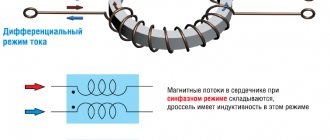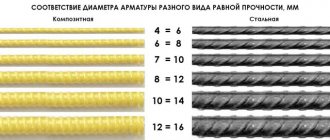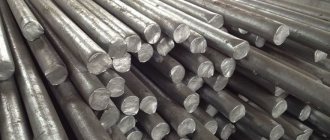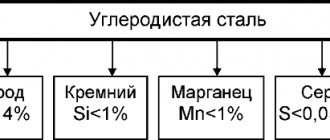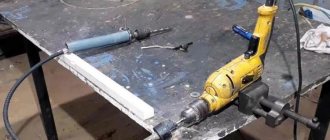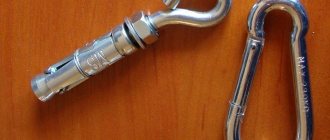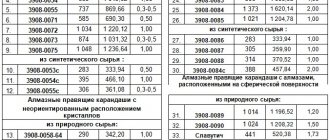| Catalog number | Description (Function) | manufacturer |
| LM358P | LOW POWER DUAL OPERATIONAL AMPLIFIERS | STMicroelectronics |
| Other PDF | not available. |
| LM358P Datasheet PDF: |
DESCRIPTION These circuits consist of two independent, high gain, internally frequency compensated which were designed specifically to operate from a single power supply over a wide range of voltages.
The low power supply drain is independent of the magnitude of the power supply voltage. Application areas include transducer amplifiers, dc gain blocks and all the conventional op-amp circuits which now can be more easily implemented in single power supply systems. For example, these circuits can be directly supplied with the standard +5V which is used in logic systems and will easily provide the required interface electronics without requiring any additional power supply. In the linear mode the input common-mode voltage range includes ground and the output voltage can also swing to ground, even though operated from only a single power supply voltage. ■ INTERNALLY FREQUENCY COMPENSATED ■ LARGE DC VOLTAGE GAIN: 100dB ■ WIDE BANDWIDTH (unity gain): 1.1MHz (temperature compensated) ■ VERY LOW SUPPLY CURRENT/OP (500µA) ESSENTIALLY INDEPENDENT OF SUPPLY VOLTAGE ■ LOW INPUT BIAS CURRENT: 20nA (temperature compensated ) ■ LOW INPUT OFFSET VOLTAGE: 2mV ■ LOW INPUT OFFSET CURRENT: 2nA ■ INPUT COMMON-MODE VOLTAGE RANGE INCLUDES GROUND ■ DIFFERENTIAL INPUT VOLTAGE RANGE EQUAL TO THE POWER SUPPLY VOLTAGE ■ LARGE OUTPUT VOLTAGE SWING 0V TO (Vcc – 1.5V)
Many device parameters will depend on which specific LM358 connection circuit is used. This operational amplifier can be used to implement many designs that can be used without problems in microcontroller technology and even in speaker systems.
This is not a very demanding element - its performance is not great, its operating voltage range is also small, but it has the main qualities - simplicity and low cost. The cost of one op amp wholesale is about 15 rubles. Therefore, unsuccessful experiments with it will not hurt your pocket.
Operational Amplifier Features
The LM358 chip is widely used among radio amateurs, as it has many advantages. Among all, the following can be distinguished:
- Extremely low price of the item.
- When implementing devices on a chip, there is no need to install additional circuits for compensation.
- It can be powered from either a unipolar or bipolar source.
- Power can come from a source whose voltage is 3.32V. This allows you to use almost any power supply.
- At the output, the signal increases at a rate of 0.6 V/µs.
- The maximum current consumption does not exceed 0.7 mA.
- The input bias voltage is no more than 0.2 mV.
These are the key features that you need to look for when choosing this chip. If you are not satisfied with some parameter, it is better to look for analogues or similar operational amplifiers.
Description of the LM358 chip
Confirmation of the high popularity of the microcircuit is its performance characteristics, which allow the creation of many different devices. The main indicative characteristics of the component include the following.
Acceptable operating parameters: the microcircuit provides single and bipolar power supply, a wide range of supply voltages from 3 to 32 V, an acceptable slew rate of the output signal equal to only 0.6 V/μs. Also, the chip consumes only 0.7 mA, and the offset voltage is only 0.2 mV.
Microcircuit pinout
From the datasheet LM358 you can see that there are two operational amplifiers in one package. Consequently, each has two inputs and the same number of outputs. Plus two more legs are designed to supply power voltage. There are only eight pins on the microcircuit. The LM358 pinout is as follows:
Read also: Monitoring the tightening torque of threaded connections
2 – negative input DA1.1.
3 – positive input DA1.1.
4 – “minus” power supply.
5 – positive input DA1.2.
6 – negative input DA1.2.
8 – “plus” power supply for LM358.
Operating principle of the op-amp
We supply some signal to the amplifier through the inputs, designated here by the symbol We (+) the so-called non-inverting input and / or We (-) the so-called inverting input. He may even have very little tension. The difference in input voltage is called differential voltage.
This amplifier is a kind of comparator - it will compare both signals to each other and behave differently depending on which signal is stronger:
We (+) > We (-) => Wy ~ Upit - Uwo
If we apply a higher voltage to the non-inverting input We (+) than to the inverting input We (-), the output will be close to the voltage Up supplied to the amplifier, minus the voltage drop across the amplifier Uwo.
We (+) < We (-) => Wy ~ 0 V
If we apply a lower voltage to the input of the non-inverting We (+) pin than to the input of the inverting We (-) pin, the output will be close to zero.
We (+) = We (-) => Wy ~ 0 V
If we apply the same signal to both inputs (called a non-differential signal in this case), the output voltage will be close to zero.
The operational amplifier with which we will conduct tests is designated LM358 (this is probably the most common op-amp chip). According to the documentation, this is a dual voltage amplifier (that is, two amplifiers in one package), so it has eight pins:
On the left is the LM358 operational amplifier; On the right is a diagram of its contacts
Pin 8 (supply voltage) and pin 4 (ground) are common to both amplifiers. The remaining legs are separate:
- the first amplifier consists of legs: 3 (We (+)), 2 (We (-)), 1 (output).
- the second amplifier consists of legs: 5 (We (+)), 6 (We (-)), 7 (output)
If you look closely, you will notice a small indentation on one side of the case. In the diagram in the note, instead of an indentation next to the number 1, there is a black dot. This is the standard way to mark the front of a chip. The legs are always numbered sequentially, starting from the notch (or point) counterclockwise.
LM358 operational amplifier with key markings
Let's check what it looks like in practice - we'll assemble a breadboard. The supply voltage is 6 V. A 220 Ohm resistor is selected for the yellow-green LED. Potentiometer P1 10 kOhm.
Attention! Before connecting the power supply to the circuit on the board, make sure that the op-amp is connected correctly, otherwise you may damage it.
Option 1 . Resistor R1 and LED D1 (yellow) are connected between the positive of the power supply and the output of the operational amplifier; The non-inverting input We (+) (the third pin of the amplifier) is also connected to the power positive.
Circuit consisting of power supply B1, operational amplifier LM358, resistor R1, potentiometer P1 and diode D1
The voltage at the We (+) input (pin 3) is higher than the voltage at the We (-) input (pin 2), so at the amplifier output (pin 1) we get a voltage close to the supply voltage, minus the voltage drop across the amplifier. The potential difference between B1's power supply and the op-amp output will be too low to power the LED, so it will remain off.
Option 2 . Resistor R1 and LED R1 (yellow in my case) are connected between the “plus” of the power supply and the output of the operational amplifier; The non-inverting We(+) input (third pin of the amplifier) is connected to ground.
The voltage at the We (+) input (pin 3) is lower than the voltage at the We (-) input (pin 2), so the amplifier output (pin 1) will be close to 0 V. The potential difference between power supply B1 and the op amp output will be enough to power supply to the LED so it will glow.
Option 3 . Resistor R1 and LED D1 (now green) are connected between the op-amp output and ground; The non-inverting input We (+) (the third output pin of the amplifier) is connected to the “plus” of the power supply.
The voltage at the We (+) input (pin 3) is higher than the voltage at the We (-) input (pin 2), so at the amplifier output (pin 1) we get a voltage close to the supply voltage minus the voltage drop across the amplifier. The potential difference between the op amp output and ground will be enough to power the LED so it will light up.
Option 4 . Resistor R1 and LED D1 (green) are connected between the op-amp output and ground; The non-inverting We(+) input (third pin of the amplifier) is connected to ground.
The voltage at the We (+) input (pin 3) is lower than the voltage at the We (-) input (pin 2), so the amplifier output (pin 1) will be close to 0 V. No potential difference between the op amp output and ground will prevent the LED from turning on , so it will remain off.
The results of the experiments are collected in the table below:
The results of the experiment - the effect of connecting We (+) - the third leg of the amplifier and the glow of the LED
Is the above circuit true for all op amps? No. Let's take, for example, another very similar op-amp, the LM393. It can only conduct electricity from a point in the circuit with a higher potential (similar to lines 1 and 2 in the table). It does not conduct current from the amplifier output to a point in the circuit at a lower voltage potential, such as ground (positions 3 and 4 in the table). In other words, if we were to use the LM393 amplifier for the experiment we just ran, the green LED would not light up regardless of the input signals. Why is this happening? Here we take a closer look at the internal structure of both amplifiers:
Diagram of the internal structure of operational amplifiers: a) LM358; b) LM393
The diagram on the left (a) shows the internal structure of the LM358 amplifier, and the diagram on the right (b) shows the LM393. Both schemes are complex, so we won’t go into details. Let's focus only on the transistors placed in front of the output (labeled OUT or OUTPUT). The LM358 has two transistors right before the output that conduct electricity in different directions (marked with a red circle). The LM393 has only one transistor just before the output (also in the red circle), which prevents current from the amplifier from flowing through the output to ground (or to a lower potential part of the circuit).
The operational amplifier is adapted to work with an external negative feedback circuit. The fact is that part of the output signal can be fed back to the input or vice versa from the input to the output of the amplifier. There can be several configurations using an op-amp and a feedback amplifier (for example, an adding, subtracting, integrating, and differentiating amplifier), but here we will consider only two of the simplest and most popular of them - non-inverting and inverting.
In what packages are microcircuits produced?
The housing can be either DIP8 - designation LM358N, or SO8 - LM358D. The first is intended for the implementation of volumetric installation, the second - for surface installation. The characteristics of the element do not depend on the type of housing - they are always the same. But there are many analogues of the microcircuit, whose parameters are slightly different. There are always pros and cons. Typically, if an element has a large range of operating voltages, for example, some other characteristic suffers.
There is also a metal-ceramic case, but such microcircuits are used if the device will be used in difficult conditions. In amateur radio practice, it is most convenient to use microcircuits in surface-mount packages. They solder very well, which is important when working. After all, it turns out to be much more convenient to work with elements whose legs are longer.
LM358 connection
Our technical tool is perhaps the most popular technical device in satellite electronics, because it can be used in various structures that increase the level of block signals in various generator installations, in analog-to-digital converters and in other devices.
Since it is considered one of the elements that can achieve a wide range of applications in the design of those systems that control the level of temperatures and other characteristics, its connection diagram is based on conventional circuits.
So, the sensor leads are connected to power networks (unipolar or bipolar), where the “main signal” is formed.
Only then, current lines are formed in the amplifier structures, capable of regulating and controlling our “impulse”, converting it so that the value is suitable for the proper functioning of the electrical network (that is, with minimal losses).
Once connected, it will be possible to determine the temperature, which varies in the range from one degree Celsius to a thousand. It is the value of T that will determine how the following elements of the system will organize their activities:
- subordinate amplifier;
- current deformation formalizer;
- “refrigerator” voltage conversion;
- double block with reverse regulation value;
- integral differential control housing;
- software designer;
- output frequency controller.
What analogues are there?
There are many analogues to the LM358 chip. Their connection diagram is exactly the same, but it’s still better to check the datasheet so as not to make a mistake. Among the complete analogues of the microcircuit, the following can be distinguished:
You can also select analogues of the LM358D element - these are UPC358G, KIA358F, TA75358CF, NE532D. There are many similar microcircuits that differ slightly from the 358. For example, LM258, LM158, LM2409 have completely similar characteristics, but the operating temperature range is slightly different.
Analogs LM358
Along with the LM358, a large number of similar operational amplifiers are produced. For example, LM158, LM258, LM2409 have similar characteristics, but different operating temperature ranges.
| Type | Minimum temperature, °C | Maximum temperature, °C | Supply voltage range, V |
| LM158 | -55 | 125 | from 3(±1.5) to 32(±16) |
| LM258 | -25 | 85 | from 3(±1.5) to 32(±16) |
| LM358 | 70 | from 3(±1.5) to 32(±16) | |
| LM358 | -40 | 85 | from 3(±1.5) to 26(±13) |
If the range of 0..70 degrees is not enough, then you should use LM2409, however, you should take into account that its power range is narrower:
Characteristics of analogues
From the datasheet LM358 and its analogues you can find out the following characteristics:
- LM158 – operates in the temperature range from -55 to +125 degrees. The supply voltage can fluctuate in the range of 3.32V.
- LM258 – operating temperature range -25. +85, supply voltage – 3.32V.
- LM358 – temperature 0. +70, voltage – 3. 32V.
In the event that the temperature range of 0. +70 is not enough, it makes sense to find an analogue operational amplifier. The LM2409 performs well; it has a wider range of operating temperatures. It’s just that it’s a little smaller for food. This significantly reduces the possibility of using the device in amateur radio designs. The LM358 connection circuit is the same as most of its analogues.
In the event that you need to install only one operational amplifier, you should pay attention to analogues like LMV321 or LM321. They have five pins, and only one op-amp is contained inside the SOT23-5 package. But in the event that a larger number of opamps are needed, you can use dual elements - LM324, in which the case has 14 pins. With the help of such elements you can save on space and capacitors in the power circuit.
Characteristics table
| Parameter | LM358, LM358N |
| Power, volts | 3-32V |
| Bipolar nutrition | ±1.5V to ±16V |
| Current consumption | 0.7mA |
| Input offset voltage | 3mV |
| Input compensation offset current | 2nA |
| Input current offset | 20nA |
| Output slew rate | 0.3 V/ms |
| Output current | 30 - 40mA |
| Maximum frequency | 0.7 to 1.1 MHz |
| Differential Gain | 100dB |
| Working temperature | 0° to 70° |
Microcircuits from different manufacturers may have different parameters, but everything is within normal limits. The only thing that can differ greatly is the maximum frequency: for some it is 0.7 MHz, for others it is up to 1.1 MHz. There are a lot of options for using ICs; there are about 20 of them in the documentation alone. Radio amateurs have expanded this number to more than 70 schemes.
We recommend reading: Do-it-yourself repair of PC power supplies: step-by-step pinout, starting the power supply from a computer
Typical functionality from the datasheet in Russian:
- comparators;
- active RC filters;
- LED driver;
- DC summing amplifier;
- pulse and pulsation generator;
- low voltage peak voltage detector;
- bandpass active filter;
- for amplification from a photodiode;
- inverting and non-inverting amplifier;
- balanced amplifier;
- current stabilizer;
- AC inverting amplifier;
- DC differential amplifier;
- bridge current amplifier.
Non-inverting amplifier circuit
- A signal is sent to the positive input.
- Two fixed resistors R2 and R1 connected in series are connected to the output of the operational amplifier.
- The second resistor is connected to the common wire.
- The connection point of the resistors is connected to the negative input.
To calculate the gain, you need to use a simple formula: k=1+R2/R1.
If there is data on the value of resistances and input voltage, then it is easy to calculate the output: U(out)=U(in)*(1+R2/R1). When using the LM358 microcircuit and resistors R1=10 kOhm and R2=1 MOhm, the gain will be equal to 101.
Read also: Weld stainless steel with a regular electrode
Advantages and applications of LM358
The operational amplifier has a number of advantages that need to be mentioned. So, this device has high sensitivity, excellent compactness and excellent reliability. In addition, it is universal in use, because it does not include complex nodes in its system that act as interference.
As we said earlier, our device operates in both bipolar and unipolar processes, this is explained by the high speed and maximum possible frequency of signal emission.
Due to the presence of such high-quality and effective properties, LM358 finds wide application in people's lives. It is used in:
- Set-top boxes, turntables and DVD players;
- Homemade film panoramas;
- Gas meters and meters;
- Simple players;
- Digital nodes and installations;
- Multimedia systems;
- Field transmitters;
- Electric motor installations;
- Engines and generators;
- Thermometer sensors;
- Libra.
Circuit of a powerful non-inverting amplifier
Elements that are used in the design of a non-inverting amplifier and their parameters:
- The chip used is LM358.
- Resistance value R1=910 kOm.
- R2=100 kOm.
- R3=91 kOm.
To amplify the signal, a semiconductor bipolar transistor VT1 is used.
In terms of voltage, the gain, provided such elements are used, is equal to 10. To calculate the gain in the general case, you need to use the following formula: k=1+R1/R2. To calculate the current coefficient of the entire circuit, you need to know the corresponding parameter of the transistor used.
Working conditions
VCC = ±15 V, TA = 25°C
| Parameter | Conditions | TYP | Unit change | |
| S.R. | Slew rate at unity gain | RL = 1 MΩ, CL = 30 pF, VI = ±10 V (see Fig. 3) | 0.3 | V/μs |
| B1 | Bandwidth at unity gain | RL = 1 MΩ, CL = 20 pF (see Fig. 3) | 0.7 | MHz |
| Vn | Equivalent noise voltage referred to input | RS = 100 Ohm, VI = 0 V, f = 1 kHz (see Fig. 4) | 40 | nV/vHz |
Unity gain amplifier
Circuit for checking noise
Voltage-to-current converter circuit
The circuit is shown in the figure and is somewhat similar to the one described in the design of a non-inverting amplifier. But here a bipolar transistor is added. The output current is directly proportional to the voltage at the input of the operational amplifier.
And at the same time, the current strength is inversely proportional to the resistance of resistor R1. If we describe this in formulas, it looks like this:
With a resistance value of R1 = 1 Om, for every 1V of voltage applied to the input, there will be 1A of current at the output. The LM358 connection circuit in voltage-to-current converter mode is used by radio amateurs to design chargers.
Comparator with and without hysteresis
The initial data for the calculation are presented in the tables.
Table. Initial data for calculating the comparator
| Entrance | Exit | Nutrition | ||||
| ViMin | ViMax | VoMin | VoMax | Vcc | Vee | Vref |
| 0 V | 5 V | 0 V | 5 V | 5 V | 0 V | 5 V |
Table. Thresholds
| Lower switching threshold VL | Upper switching threshold VH | VH–VL |
| 2.3 V | 2.7 V | 0.4 V |
Description of the scheme
Comparators are used to compare two input signals and generate an output signal depending on which of the input signals is larger (Figure 84). Noise or bounce on the input signals can cause the comparator to switch multiple times. To combat such switchings, hysteresis is used, which sets the upper and lower switching limits.
Rice. Comparator circuits with hysteresis (left) and without hysteresis (right)
We recommend that you pay attention to:
- a comparator with minimal intrinsic current consumption should be used;
- the accuracy of setting the hysteresis threshold values is determined by the accuracy of the resistor values;
- The response delay is determined by the parameters of the comparator used.
Principle of operation
To demonstrate how a high-speed comparator with hysteresis works, you need to take a circuit with two outputs.
We recommend reading: Homemade metal detectors, or how to make a metal detector with your own hands
The connection diagram, from which you can understand the principle of operation of the comparator, is shown above. Using an analog signal at the + input, called "non-inverting", and the output, called "inverting", the device uses two similar signals of opposite polarity. However, if the analog input is greater than the analog output, then the output will be “1” and this will turn on the open collector of transistor Q8 on the LM339 equivalent circuit to be turned on. But, if the input is at a negative level, then the signal will be equal to “0”, which is why the collector will be closed.
Almost always, a two-threshold or phase comparator (for example, on transistors, without an amplifier) acts on the inputs in logic circuits, and accordingly, operates at the level of a certain power network. This is a kind of transition element between analog and digital signals. This principle of operation makes it possible not to specify the certainty or uncertainty of signal outputs, since the comparator always has some capture of the hysteresis loop (regardless of its level) or a final gain.
Procedure for calculating a comparator with hysteresis
- Select the value of resistor R1 = 100 kOhm. The threshold voltage values were determined in the source data table: VL = 2.3 V, VH = 2.7 V.
- Let's calculate R2 using formula 1:
- Let's calculate R3 using formula 2:
- We check the obtained hysteresis value according to formula 3:
How to calculate a comparator without hysteresis
- We select the threshold value Vth = 2.5 V.
- We select the value of resistor R4 = 100 kOhm.
- We calculate R5 using formula 4:
Circuit Simulation
Timing diagrams of the circuit operation are presented in Figures 1 and 2.
Rice. 1. Timing diagrams of the circuit operation: noise is present only in the initial short time interval 0...120 μs
Rice. 2. Enlarged voltage oscillogram: interval 40…110 µs
Gain adjustment
The previous design has one drawback - there is no way to adjust the gain. The reason is the complexity of the implementation, because you need to use two variable resistors at once. But if suddenly there is a need to adjust the coefficient, you can use a design circuit based on three op-amps:
Here the adjustment occurs using a variable resistor R2. It is necessary to take into account that the following equalities are satisfied:
In this case k=(1+2*R1/R2).
Amplifier output voltage U(out)=(1+2*R1/R2)*(Uin1-Uin2).
Main Parameters of LM358
The sensor has several key parameters at once. These are the ones that will be discussed in this section.
Let's start, perhaps, with “limited gain,” which is denoted as follows: [gopen.]. This is a certain indicator that demonstrates how many times the “op-amp” has increased the operating frequency of the initial signal.
Now let's look at the second most important element - [vout.] - the voltage at the output. [vout.] cannot be infinite, because it is precisely this that ensures equality in transition phases.
And finally, [rres.] is the resulting resistance, which shows the maximum “value” of the resistors used in the circuit.
Current monitor circuit
Another circuit that allows you to measure the current value in the supply wire. It consists of a shunt resistor R1, an operational amplifier LM358, an NPN transistor and two resistors. Element characteristics:
- chip DA1 – LM358;
- resistor resistance R=0.1 Ohm;
- resistance value R2=100 Ohm;
- R3=1 kOhm.
The op-amp supply voltage must be at least 2 V higher than that of the load. This is a prerequisite for the functioning of the scheme.
Popular circuits for lm358
There are various devices assembled on the LM358 N that perform specific functions. In this case, these can be all kinds of amplifiers, both UMZCH and in intermediate circuits for measuring various signals, an LM358 thermocouple amplifier, comparing circuits, analog-to-digital converters, etc.
Non-inverting amplifier and voltage reference
These are the most popular types of wiring diagrams used in many devices to perform various functions. In a non-inverting amplifier circuit, the output voltage will be equal to the product of the input voltage and the proportional gain formed by the ratio of two resistances included in the inverting circuit.
The voltage reference circuit is highly popular due to its high practical performance and stability in various modes. The circuit perfectly maintains the required output voltage level. It has been used to build reliable and high-quality power supplies, analog signal converters, and in devices for measuring various physical quantities.
Sine Wave Generator
One of the highest quality sine wave generator circuits is the Wien bridge device . With the correct selection of components, the generator produces pulses in a wide range of frequencies with high stability. Also, the LM 358 chip is often used to implement a rectangular pulse generator of various duty cycles and durations. At the same time, the signal is stable and high quality.
Amplifier
The main applications of the LM358 chip are amplifiers and various amplification equipment. This is ensured due to the inclusion features and selection of other components. This circuit is used, for example, to implement a thermocouple amplifier.
- How to make a current stabilizer for LEDs?
Thermocouple amplifier on LM358
Very often in the life of a radio amateur it is necessary to monitor the temperature of some devices. For example, on a soldering iron tip . You can’t do this with an ordinary thermometer, especially when you need to create an automatic control circuit. For this, you can use the LM 358 op-amp. This microcircuit has a low thermal zero drift, and therefore is classified as high-precision. Therefore, it is actively used by many developers for the manufacture of soldering stations and other devices.
The circuit allows you to measure temperature in a wide range from 0 to 1000 °C with a fairly high accuracy of up to 0.02 °C. The thermocouple is made of a nickel-based alloy: chromal, alumel. The second type of metal has a lighter color and is less susceptible to magnetization; chromal is darker and magnetizes better. Features of the circuit include the presence of a silicon diode, which should be placed as close as possible to the thermocouple. When heated, the chromal-alumel thermoelectric pair becomes an additional source of emf, which can make significant adjustments to the main measurements.
Simple current regulator circuit
The circuit includes a silicon diode . The transition voltage from it is used as a source of a reference signal, supplied through a limiting resistor to the non-inverting input of the microcircuit. To adjust the stabilization current of the circuit, an additional resistor is used, connected to the negative terminal of the power supply, to the non-inverting input of the MS.
The circuit consists of several components:
- A resistor supporting the op-amp with a negative terminal and a resistance of 0.8 Ohms.
- A resistive voltage divider consisting of 3 resistances with a diode serving as a reference voltage source.
An 82 kOhm resistor is connected to the negative of the source and the positive input of the MS. The reference voltage is formed by a divider consisting of a 2.4 kOhm resistor and a directly connected diode. After which the current is limited by a 380 kOhm resistor. The op-amp controls a bipolar transistor, the emitter of which is connected directly to the inverting input of the MS, forming a negative deep connection. Resistor R 1 acts as a measuring shunt. The reference voltage is formed using a divider consisting of a diode VD 1 and a resistor R 4.
In the presented circuit, provided that resistor R2 with a resistance of 82 kOhm is used, the stabilization current in the load is 74 mA at an input voltage of 5V. And when the input voltage increases to 15V, the current increases to 81mA. Thus, when the voltage changes by a factor of 3, the current changes by no more than 10%.
Charger for LM 358
Chargers with high stabilization and control of the output voltage are often made using the LM 358 op-amp As an example, you can consider a USB-powered Li-ion charger. This circuit is an automatic current regulator. That is, as the voltage on the battery increases, the charging current drops. And when the battery is fully charged, the circuit stops working, completely closing the transistor.
Categories: This is interesting
- How to charge a screwdriver battery correctly
- Miter saw with broach for wood: device, rating
- Wood planer for home workshop
- Circular wood saw: design and varieties
- Description, characteristics and choice of electric planer
What characteristics of the LM358 brought it such popularity:
- How to make a current stabilizer for LEDs?
- low cost;
- no additional compensation circuits;
- single or bipolar power supply;
- wide range of supply voltages from 3 to 32 V;
- Maximum output slew rate: 0.6 V/µs;
- Current consumption: 0.7 mA;
- Low input offset voltage: 0.2 mV.
Voltage to frequency converter circuit
This device will be required when there is a need to calculate the period or frequency of a signal.
The circuit is used as an analog-to-digital converter. Parameters of elements used in the design:
- DA1 – LM358;
- C1 – 0.047 µF;
- R1=R6=100 kOhm;
- R2=50 kOhm;
- R3=R4=R5=51 kOhm;
- R6=100 kOhm;
- R7=10 kOhm.
These are all designs that can be built using an op-amp. But the scope of the LM358 is not limited to this; there are a large number of much more complex circuits that allow you to implement various possibilities.
Read also: How to weld thick metal correctly
The LM358 chip, as written in its DataSheet, is a universal solution, since the connection circuit of most popular devices is very simple, in cases where there are no strict requirements for high speed, power dissipation and non-standard supply voltage. Low cost, no need to connect additional frequency correction elements, the ability to use it over the entire range of standard supply voltages (up to +32V) and low current consumption make it the number one candidate for electronic projects with op-amps.
Purpose
Why do you need a comparator and how to use it without an amplifier?
In most cases, this device is used in simple computer circuits where it is necessary to compare incoming voltage signals. This can be a charger for a laptop or phone, a scale (mass meter), an AVR mains voltage sensor, a timer (composer type lm 358, microcontroller, etc. It is also used by various integrated circuits to control input pulses, providing communication between the signal source and its destination center. The most popular example is the comparator trigger (regulator) Shimmer. It operates in multi-channel mode, accordingly, it can compare a large number of signals. In particular, this trigger is used to restore a digital signal that distorts the connection depending on voltage level and distance of the power source.
This is an analogue of a standard comparator, just with more advanced functionality, which provides measurement of several incoming signals.
There is also a roughness comparator. This is a device that helps to visually determine the condition of a surface that has already been treated. The use of this device is justified by the need to determine the tolerances of previously processed surfaces.
LM358 pinout
LM358 consists of two op-amps, each with 4 pins that have their own purpose. There are 8 contacts in total. They are produced in several types of housing designs, for volumetric DIP and surface mounting on an SO board. They can also be found in improved SOIC, VSSOP, TSSOP packages.
The assignment of contacts for all types of housings is the same: 2.3, 5.6, - inputs, 1.7 - outputs, 4 - minus power supply, 11 - plus power supply.
DIY adjustable power supply
A power supply is a necessary thing for every radio amateur, because to power electronic homemade products you need a regulated power source with a stabilized output voltage from 1.2 to 30 volts and a current of up to 10A, as well as built-in short circuit protection. The circuit shown in this figure is built from the minimum number of available and inexpensive parts.
Scheme of an regulated power supply on an LM317 stabilizer with short-circuit protection
The LM317 IC is an adjustable voltage regulator with built-in short circuit protection. The LM317 voltage stabilizer is designed for a current of no more than 1.5A, so a powerful MJE13009 transistor is added to the circuit, capable of passing through itself a really high current of up to 10A, according to the datasheet, a maximum of 12A. When you rotate the knob of the variable resistor P1 by 5K, the voltage at the output of the power supply changes.
There are also two shunt resistors R1 and R2 with a resistance of 200 Ohms, through which the microcircuit determines the output voltage and compares it with the input voltage. 10K resistor R3 discharges capacitor C1 after the power supply is turned off. The circuit is powered by voltage from 12 to 35 volts. The current strength will depend on the power of the transformer or switching power supply.
I drew this diagram at the request of novice radio amateurs who assemble circuits using wall-mounted installations.
Scheme of an regulated power supply with short-circuit protection on LM317
It is advisable to carry out the assembly on a printed circuit board, so it will be beautiful and neat.
Printed circuit board of the regulated power supply on the LM317 voltage regulator
The printed circuit board is made for imported transistors, so if you need to install a Soviet one, the transistor will have to be unfolded and connected with wires. The MJE13009 transistor can be replaced with the MJE13007 from the Soviet KT805, KT808, KT819 and other npn structure transistors, it all depends on the current you need. It is advisable to reinforce the power paths of the printed circuit board with solder or thin copper wire. The LM317 voltage stabilizer and the transistor must be installed on a radiator with sufficient area for cooling; a good option is, of course, a radiator from a computer processor.
It is advisable to screw a diode bridge there. Don't forget to insulate the LM317 from the heatsink with a plastic washer and a heat conductive gasket, otherwise there will be a big boom. Almost any diode bridge can be installed with a current of at least 10A. Personally, I installed the GBJ2510 at 25A with double the power reserve, it will be twice as cool and reliable.
And now the most interesting part... Testing the power supply for strength.
I connected the voltage regulator to a power source with a voltage of 32 volts and an output current of 10A. Without load, the voltage drop at the output of the regulator is only 3V. Then I connected two series-connected halogen lamps H4 55 W 12V, the lamp filaments were connected together to create a maximum load, the result was 220 W. The voltage dropped by 7V, the nominal voltage of the power supply was 32V. The current consumed by four halogen lamp filaments was 9A.
The radiator began to heat up quickly, after 5 minutes the temperature rose to 65C°. Therefore, when removing heavy loads, I recommend installing a fan. You can connect it according to this diagram. You can not install the diode bridge and capacitor, but connect the L7812CV voltage stabilizer directly to capacitor C1 of the regulated power supply.
Connection diagram of the fan to the power supply
What happens to the power supply if there is a short circuit?
In the event of a short circuit, the voltage at the output of the regulator is reduced to 1 volt, and the current is equal to the current of the power source, in my case 10A. In this state, with good cooling, the unit can remain for a long time; after the short circuit is eliminated, the voltage is automatically restored to the limit set by the variable resistor P1. During the 10-minute short-circuit test, no parts of the power supply were damaged.
Radio components for assembling an adjustable power supply on LM317
- Voltage stabilizer LM317
- Diode bridge GBJ2501, 2502, 2504, 2506, 2508, 2510 and other similar ones designed for a current of at least 10A
- Capacitor C1 4700mf 50V
- Resistors R1, R2 200 Ohm, R3 10K all resistors with a power of 0.25 W
- Variable resistor P1 5K
- Transistor MJE13007, MJE13009, KT805, KT808, KT819 and other npn structures
Friends, I wish you good luck and good mood! See you in new articles!
I recommend watching a video on how to make an adjustable power supply with your own hands
Specifications
The following are the maximum permissible operating conditions for the ambient operating temperature range TA from 0 to +70 °C, unless otherwise stated.
Basic electrical characteristics, at ambient temperature TA = 25 °C.
Recommended operating conditions within the ambient operating temperature range unless otherwise noted:
Device susceptibility to electrostatic discharge (ESD) damage:
This device also has thermal characteristics:
Microcircuit analogues
Being average in terms of parameters, the LM358 operational amplifier has similar technical characteristics . The component without a letter can be replaced with OP295, OPA2237, TA75358P, UPC358C, NE532, OP04, OP221, OP290. And to replace LM358D you will need to use KIA358F, NE532D, TA75358CF, UPC358G. The integrated circuit is produced in a series with other components that differ only in the temperature range, designed to operate in harsh conditions.
There are operational amplifiers with a maximum temperature of up to 125 degrees and a minimum of up to 55. Because of this, the cost of the device varies greatly in different stores.
- Audio amplifier circuit using one transistor
The series of microcircuits includes LM138, LM258, LM458. When selecting alternative analog elements for use in devices, it is important to consider the operating temperature range . For example, if the LM358 with a limit of 0 to 70 degrees is not enough, then the more rugged LM2409 can be used. Also, quite often, for the manufacture of various devices, not 2 cells are required, but 1, especially if the space in the body of the finished product is limited. One of the most suitable for use in the design of small devices are op-amps LM321, LMV321, which also have analogues AD8541, OP191, OPA337.
Connection diagrams
Below are some simple lm358 connection diagrams that may be useful to you. These are all previews, so be sure to test everything before implementing it in production.
Circuit in a powerful non-inverting amplifier.
Voltage - current converter.
Circuit with differential amplifier.
Non-inverting medium power amplifier.
List of previously published chapters
- The Analog Designer's Cookbook: Op-Amps
- Inverting amplifier
- Non-inverting amplifier
- Inverting adder
- Differential amplifier
- Integrator
- Differentiator
- Transimpedance amplifier
- Unipolar current measurement circuit
- Bipolar current measurement circuit
- Unipolar current measurement circuit with a wide operating range (3 decades)
- PWM generator on op-amp
- AC Voltage Inverting Amplifier (Active High Pass Filter)
- Non-inverting AC voltage amplifier (active high-pass filter)
- Active bandpass filter
- Half Wave Inverting Rectifier
- Op-amp rectifier
- Low voltage rectifier with single supply
- Voltage rate limiter
- Differential signal generation circuit
- Inverting amplifier circuit with inverting input bias
- Non-inverting amplifier circuit with inverting input bias
- Non-inverting amplifier circuit with non-inverting input biased
- Inverting amplifier circuit with non-inverting input biased
Translated by Vyacheslav Gavrikov at the request of COMPEL JSC
•••
Analogs
Analogues of LM358 can be considered microcircuits in which identical characteristics are indicated. These include: LM158, LM258, LM2904, LM2409. These microcircuits differ slightly from the one described in their thermal parameters and are suitable as a replacement for most projects.
To replace it you can use: GL 358, NE 532, OP 04, OP 221, OP 290, OP 295, OPA 2237, TA7 5358-P, UPC 358C, AN 6561, CA 358E, HA 17904. Domestic analogs of lm358: KR 1401UD5 , KR 1053UD2, KR 1040UD1.
An analogue in terms of electrical parameters, but with four op-amps in one chip - LM324 - may also be suitable for replacement.
Thursday, February 14, 2022
Sound amplifier for lm358
The idea came to my mind to build a headphone amplifier using the lm358. The idea was caused by the fact that I urgently needed a device to test operational amplifiers, and since I don’t currently have an oscilloscope, I decided to assemble such a device with my own hands. The device will be an amplifier based on lm358, since this is the op amp I need to check.
First, let's look at the characteristics of the LM358. To do this, let’s find the datasheet for this op-amp and pay attention to this table.
From the table we see what voltage the lm358 can be powered with, this is from 3 volts to 30 with unipolar power supply. My choice was 5 volts, since this voltage can be taken from anywhere - even from a USB port, even from a power bank. Next, you need to decide on the circuit; it will be a classic op-amp amplifier circuit with negative feedback. Let's take the diagram from the datasheet as a basis and modify it a little.
Resistors RG and RF are responsible for the depth of feedback by adjusting the gain. Resistor RIN limits the input signal. We will put a capacitor in front of RIN in order to cut off the direct current, and RG can be made variable to regulate the volume. For power supply, we will definitely install an electrolytic capacitor so that there are no short-term drops in the supply voltage.
After assembling the test sample, the sound was so terrible that the circuit had to be significantly redesigned. As a result, we had to deviate a little from the example in the datasheet. Through calculations and trial and error, this scheme was formed. The result was a full-fledged amplifier, which I loaded not with headphones, but with 15-watt speakers with a resistance of 4 Ohms. The amplifier, of course, will not produce such power, these speakers were simply available.
Amplifier circuit based on LM358
Let's look at this diagram in order, what is there and why. First, let's start with capacitors C1 and C2. Initially, it was planned to install small-capacity ceramic capacitors, but practice has shown that large-capacity capacitors were best suited. First I set the non-polar one to 1 mF and this led to enormous distortion; when I tried to send a signal bypassing the capacitor, the distortion disappeared. I tried various capacitors, in the end the electrolytic capacitors that I bought for the motherboard sounded best. Perhaps it’s a matter of ESR or harmonic distortion, which directly depend on the quality of the capacitors, and these simply turned out to be of better quality than the others available. Unfortunately, it is not possible to measure ESR or harmonic input coefficient due to the lack of appropriate measuring equipment.
Marking
The LM prefix was first used in general purpose markings by National Semiconductor. The numbers “358” are its serial number. In 2011, this company was acquired by another electronics manufacturer, Texas Instruments. Since this year, the prefix “LM” has been the Texas Instruments manufacturer code, but despite this, other manufacturers also use this code when marking their products. LM358, LM358-N and LM358-P chips have the same technical parameters. Most manufacturing companies use the symbols “-N” and “-P” to designate plastic PDIP enclosures.
In the technical descriptions the following types are found: LM358A, LM358B, LM358BA. This indicates the next generation version of the industry standard LM358. "B" devices may be available in more modern TSOT and WSON micro packages.
Voltage indicator on two-color LED
Another popular indication scheme is one that uses a two-color LED to display the state of charge of the battery or to signal when a lamp is turned on or off in another room. This can be very convenient, for example, if the light switch in the basement is located before the stairs leading down (by the way, do not forget to read an interesting article on how to illuminate the stairs with LED strip). Before you go down there, you turn on the light and the indicator lights up red, when off you see a green glow on the key. In this case, you don’t have to go into a dark room and feel for the switch there. When you leave the basement, you know by the color of the LED whether the light in the basement is on or not. At the same time, you monitor the health of the light bulb, because if it burns out, the red LED will not glow. Here is a diagram of a voltage indicator on a two-color LED.
In conclusion, we can say that these are only the basic possible schemes for using LEDs to indicate voltage. All of them are simple, and even an amateur can do them. They didn't use any expensive integrated circuits or anything like that. We recommend that all amateur and professional electricians acquire such a device so that they never endanger their health by starting repair work without checking the presence of voltage.
Application
Lm358 is widely used in:
- devices such as “flashing beacon”;
- power supplies and chargers;
- engine control circuits;
- motherboards;
- split systems for indoor and outdoor use;
- household appliances: dishwashers, washing machines, refrigeration units;
- various types of inverters;
- uninterruptible power supplies;
- controllers, etc.
Manufacturers usually indicate the possibilities of using the microcircuit in the technical descriptions of their devices.
